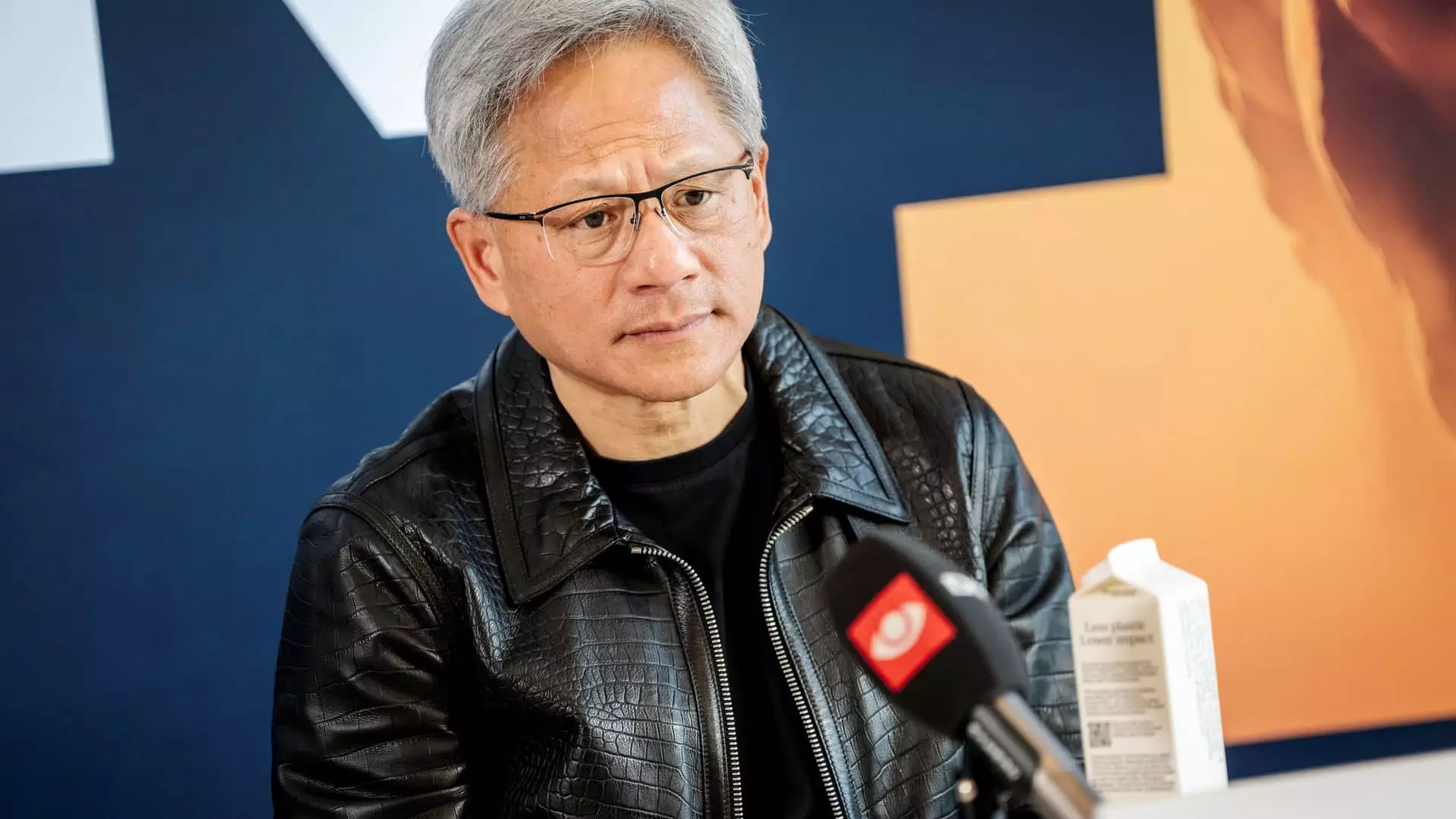Nvidia continuously asserts its dominance in the rapidly expanding sector of artificial intelligence (AI) chips, maintaining an impressive 80% market share despite increasing competition. With its graphics processing units (GPUs) being the primary choice for developing and implementing generative AI applications, Nvidia has positioned itself as a critical player in the tech industry. As investors look forward to the company’s upcoming third-quarter earnings report, they are eager to discover whether Nvidia can sustain its extraordinary growth momentum, which is increasingly vital as the AI boom approaches its third anniversary.
In a recent analysis, HSBC analyst Frank Lee highlighted the unusual path Nvidia is navigating, reflecting on the challenges it faces as it strives to maintain momentum within a staggering $3.5 trillion market cap. Lee’s bullish outlook suggests that Nvidia’s growth trajectory remains unbroken, with projections indicating a continued upswing through data center operations into 2026. His consistent buy rating on Nvidia stock signifies confidence not only in its strategic initiatives but also in its capacity to leverage its strengths in an evolving market.
The launch of the Blackwell chip signifies a crucial turning point for Nvidia, with the new generation of GPUs already being distributed to industry titans like Microsoft, Google, and OpenAI. However, the real litmus test will be the market’s response to this product. Investors are particularly keen on any insights Nvidia’s CEO, Jensen Huang, may provide regarding Blackwell’s performance and potential demand. Moreover, there have been emerging concerns regarding overheating issues in some systems utilizing Blackwell chips, adding an element of uncertainty that could impact investor sentiment.
As Nvidia approaches the earnings release, analysts foresee around $33.12 billion in revenue, translating to an impressive year-over-year growth rate nearing 83%. While this reflects a significant uptick, it is worth noting that Nvidia reported staggering growth figures previously—262% in the April quarter and 265% in January. This stagnation in growth percentages can be attributed to the fact that Nvidia’s total revenue base has expanded significantly. The company’s ability to maintain a robust sales increase, even if decelerating, remains a critical indicator of its overall health.
In terms of earnings per share, consensus estimates suggest Nvidia will post approximately 75 cents, continuing to affirm its position as a potentially lucrative investment. A notable observation is that Nvidia’s data center segment has constituted nearly 88% of its sales in the latest quarter, underscoring a strategic pivot that perhaps sidesteps its traditional gaming segment, which now faces declining market performance.
Despite Nvidia’s stellar success in AI and data centers, its legacy gaming business has begun to show signs of distress. The company notably produces chips for platforms like the Nintendo Switch, which has been reported to experience dwindling sales as the console nears the end of its lifecycle. Estimates predict a modest growth of 6% for Nvidia’s gaming division, with projected revenue of approximately $3.03 billion. Conversely, the automotive sector, though still small compared to data centers, presents promising growth prospects of 38%, potentially worth around $360 million. Yet, this is a mere fraction of Nvidia’s total revenue.
Overall, the key to Nvidia’s sustained success lies in its ability to consolidate its dominance in the data center arena, which continues to see nearly doubling revenues year-over-year. The ongoing demand for AI capabilities means that as long as Huang can reassure investors about ongoing performance and industry leadership, Nvidia’s position will likely remain strong.
Nvidia stands at a unique juncture of challenge and opportunity in the AI landscape. With growing competition, scrutiny over new technologies, and shifting market dynamics, the company’s strategies in the coming quarters will be pivotal. While the existing momentum in data centers bodes well, Nvidia’s ability to adapt and innovate across its diverse segments will ultimately dictate its path forward as investors remain attentive to any signals of incoming growth challenges or shifts in market demand.

